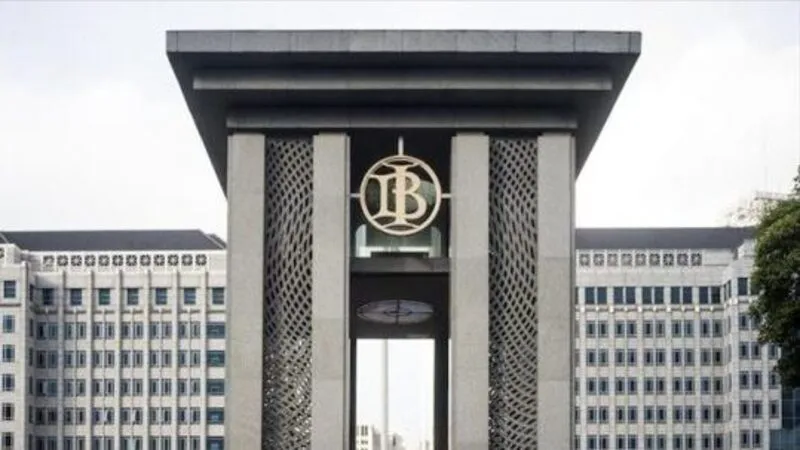
Harun Al-Rasyid Lubis. Professor at ITB, Faculty of Civil & Environmental Engineering, Chairperson IPKC (Infrastructure Partnership & Knowledge Center).
The Indonesian government’s reported consideration of a massive Rp200 trillion stimulus to catalyze bank lending is a bold recognition of a critical problem: credit stagnation is a handbrake on national economic growth.
With undisbursed loans towering at over Rp2,400 trillion, businesses are hesitant to invest, and banks are paralyzed by risk aversion.
While the intent is commendable, unleashing such a colossal sum into the current financial ecosystem without fundamental preconditions is a recipe for inefficiency and new risks.
The readiness and benefit of this stimulus hinge entirely on the government’s willingness to first engineer profound structural changes, particularly in how we finance the long-term future of the nation.
A critical nuance that must be addressed is the existing distortion in the financial sector: the massive channeling of intermediary funds towards long-term infrastructure projects, primarily through State-Owned Enterprises (SOEs).
Commercial banks, by their very nature, are built on a model of liquidity transformation. They take short-term deposits from the public and businesses and transform them into medium-term loans.
This model is fundamentally mismatched with the needs of infrastructure projects, which require patient, long-term capital with grace periods that may extend for a decade or more before yielding a return.
When banks are compelled or incentivized to pour trillions of Rupiah into infrastructure SOEs, they create a significant asset-liability mismatch on their balance sheets.
They are funding long-term, illiquid assets with short-term, liquid liabilities. This exposes the entire financial system to immense risk if there were ever a sudden loss of confidence and a wave of deposit withdrawals.
Furthermore, this practice "crowds out" lending to the real, productive private sector—the very MSMEs and corporations the new stimulus aims to support—as banks' capital and risk appetite are absorbed by sovereign-linked projects.
BPI Danantara: A Worthy but Challenged Endeavor

The creation of Badan Pengelola Investasi (BPI) Danantara, and the Indonesian Investment Authority (INA), was a direct response to this very problem.
Its mandate is to attract and manage long-term capital, especially from foreign sovereign wealth funds, to co-invest in Indonesia's infrastructure without distorting the domestic banking sector. It is designed to be the right tool for the job.
However, the same challenges that stifle bank lending will also challenge Danantara’s success. Sophisticated international investors will conduct relentless due diligence.
They will be wary if:
Projects are plagued by off-taker risks (e.g., uncertain government payments)
Land acquisition remains slow and contentious
Regulatory frameworks are inconsistent or unpredictable
The threat of legal uncertainty persists for partners and operators.
Simply put, Danantara cannot magically resolve the underlying structural inefficiencies that make Indonesian infrastructure projects risky. It is a conduit for capital, not a fix for fundamental governance and project preparation issues.
If these issues are not resolved, even this dedicated institution will struggle to deploy capital at the scale and pace envisioned. To read more about warning for Danantara's governance and talent pool, please refer to the following articles.
The Fundamental Preconditions for a Successful Stimulus

Therefore, for the Rp 200 trillion banking stimulus to be effective and avoid the pitfalls of past strategies, it must be part of a broader, smarter framework.
Let Banks Be Banks, and Let DFIs Be DFIs
A clear demarcation is needed. Commercial banks must be shielded from the pressure to fund long-gestation infrastructure and allowed to focus on their core function: financing the working capital and expansion of businesses.
The role of financing SOEs and infrastructure must fall to dedicated Development Financial Institutions (DFIs) and vehicles like BPI Danantara, which are capitalized with patient, long-term capital suited for the task.
Overhaul the Legal Environment for Lenders
The primary obstacle to bank lending is not liquidity but paralyzing risk aversion, driven by the fear of criminal prosecution for loan defaults.
The government must urgently clarify and enforce the distinction between criminal misconduct and commercial credit risk.
Without this shield, the new stimulus will remain stuck in bank treasuries, as bankers will rationally choose safety over risky lending.
Fortify Targeted Credit Guarantees
A portion of the stimulus should be used to capitalize robust, streamlined guarantee schemes.
Instead of a blanket injection, the government should absorb 70-80% of the risk on loans to priority sectors (e.g., green technology, export-oriented SMEs) through an enhanced KUR-style program.
This directly tackles risk aversion by making the banks’ exposure manageable.
Build a Modern Credit Infrastructure
Banks lack the data to assess the creditworthiness of SMEs. The stimulus must be paired with a national project to build a public credit registry using alternative data (e-tax, e-commerce transactions).
This reduces information asymmetry and enables data-driven lending.
Read also: Peringatan bagi BPI Danantara: Hati-Hati Berinvestasi di Infrastruktur Publik (2)
The Rp200 trillion plan highlights a persistent confusion in Indonesia’s financial strategy: using the wrong tools for the job. Pouring short-term intermediary deposits into infrastructure creates systemic risk.
Using a stimulus aimed at private credit to fix a problem caused by banks being forced to act as DFIs is contradictory.
The solution is a strategy of specialization. Commercial banks must be empowered and protected to do what they do best: serve private enterprises.
Institutions like BPI Danantara must be supported by fixing fundamental project preparation and regulatory issues so they can do what they are designed to do: fund infrastructure with appropriate capital.
The success of any stimulus depends on this clear-eyed diagnosis and the political courage to stop forcing a square peg into a round hole.
Only then can Indonesia build a financial system that is both stable and dynamic, serving both its immediate business needs and its long-term development ambitions.***
Simak info publik, kebijakan & geopolitik dunia di kanal Whatsapp dan Telegram The Stance.







